Jersey Geology Trail |
||
Home Page |
||
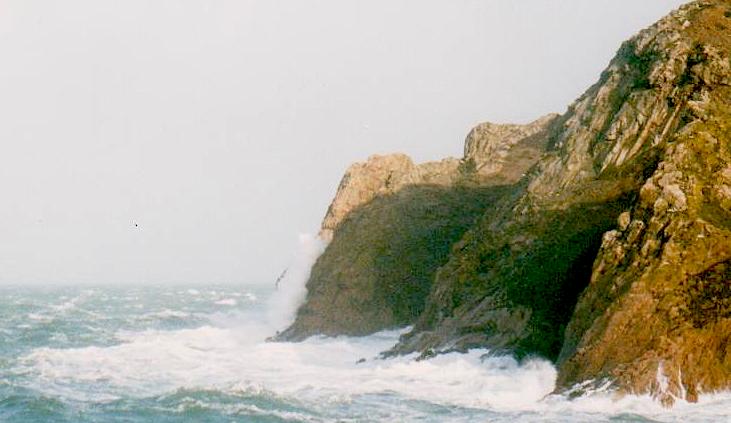 |
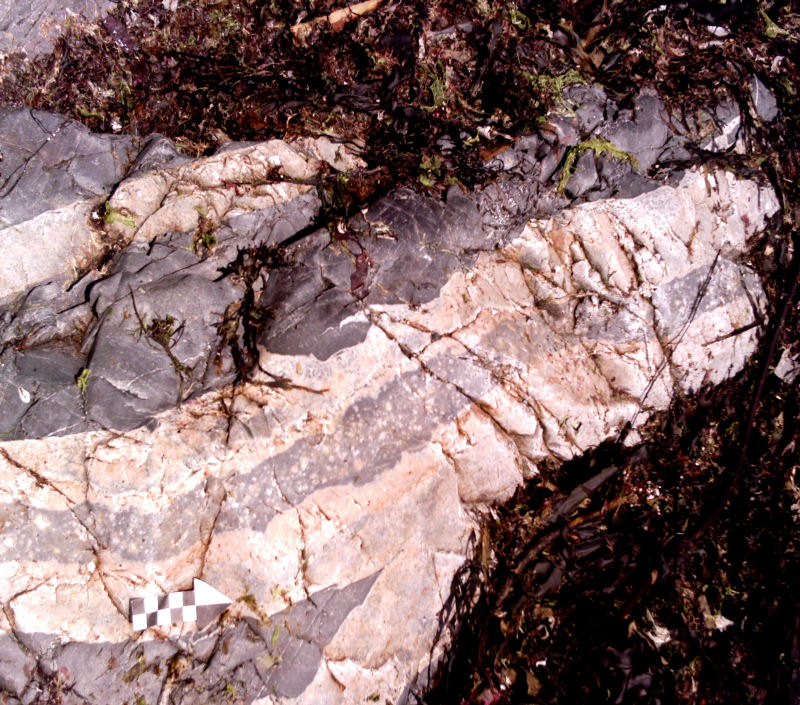 |
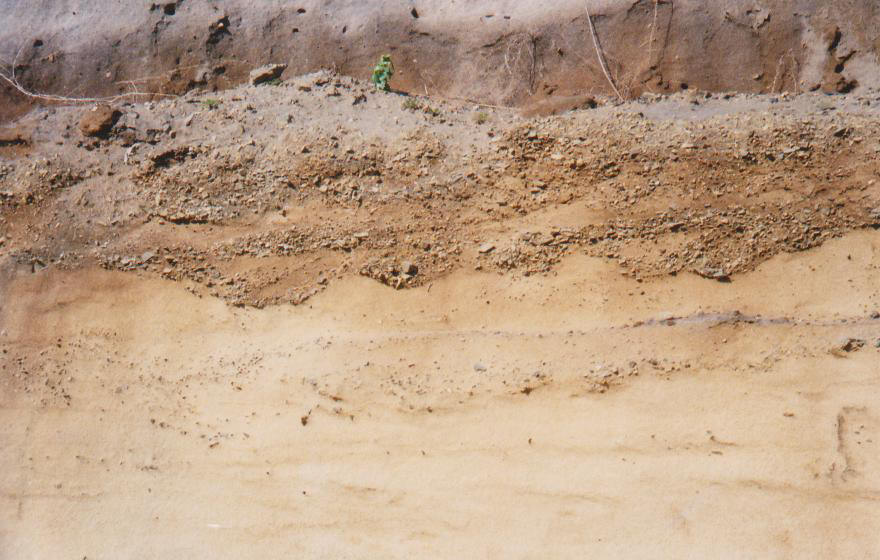 |
The Jersey Geology Trail, around Jersey in the Channel Islands, GB, reveals a remarkable variety of rock types and structures exposed in a small island, 9 x 5 miles (c.15x10km), situated in the Bay of St. Malo between Normandy and Brittany. The beauty of Jersey lies in its cliffs, bays and inland valleys. This beauty is the result of the island's geology, the colour and the different hardness and structure of the rocks, and their response to the changes of climate over the years. However, where are the descriptions, and explanations of the origins of this beauty? They are in academic journals and papers, in technical language and for the most part, without the colour which brings them to life. This website and the new series of Jersey Geology Trails at the end of the Jersey Geology Trail page were designed to remedy this. The trails may be freely downloaded. Click here to go straight to the Jersey Geology Trails. By exploring the different colours, patterns and structures in the rocks along the beaches, in the coves and along the cliff-top walks, Jersey holidays are made all the more fascinating and one can work out how the island was made, what's happened to our landscape and how the different types of scenery have been formed. All the colour photographs can be enlarged, see below................. and students and staff alike may find worthy research topics in the following pages, summaries of which are at the end of this page. The information has been found during field studies and by reading the numerous references many of which are in the annual Geology Section reports in the annual Bulletins of La Société Jersiaise. I became indebted to, and further inspired by the persistence and dedication of Les Pères Noury and Burdo, and by the former Section Chairmen, Dr. Arthur Mourant and A. J. Robinson (who in 1937, visited the reef Les Boeufs by yacht and swam to the outcrop to obtain samples). The Jersey Geology Trail is fascinating, with Precambrian to Lower Palaeozoic rock types varying from shales and sandstones, through andesites and minor basalts, flow-banded and spherulitic rhyolites and ignimbrites to flash-flood conglomerates. These are all folded and intruded by a variety of gabbros, diorites, and various striking pink granites, and a swarm of dolerite dykes plus lamprophyre, porphyritic felsite, rhyolite and various composite minor intrusives dykes and the odd sill. Metamorphic rocks also occur and range from contact metamorphic hornfelses to Green Schist Facies igneous rocks with the various minerals easy to see. Finally, these are all overlain by various Pleistocene and Holocene loess, peat and forest, sand and head deposits seen around the coasts from shore to cliff top, in the valleys and marshes and in a fine dune system on the west coast. | ||
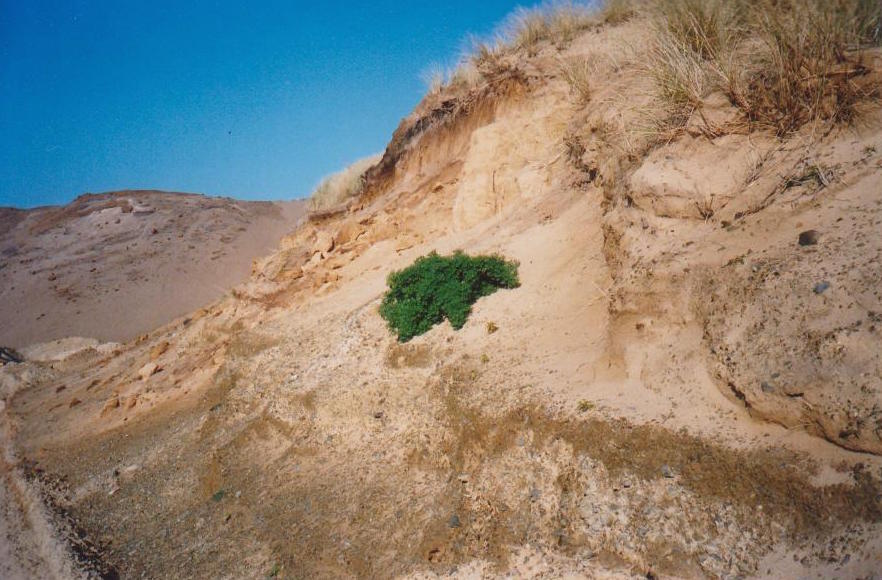 |
||
In addition, the Jersey Geology Trail takes you via descriptions of the adjacent sea floor geology and the geology of Normandy and Brittany into the geological setting and geological history of the area. |
||
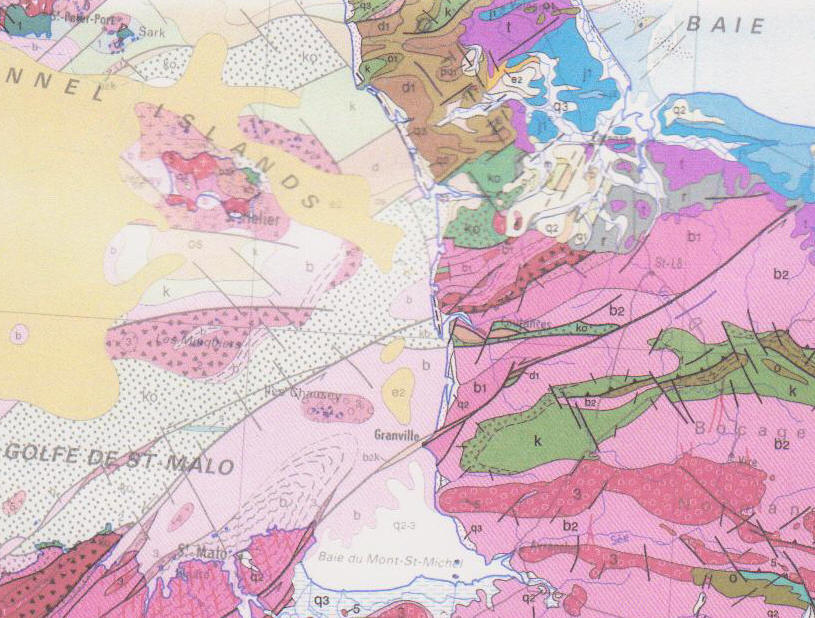 |
||
Your present Jersey Geology Trail can be done several ways, either through time or via your special interests. Chronologically, one can proceed from the the Jersey Shale Formation at L'Étacq to the shales from St. Aubin to Belcroute and to those at Gorey, then via the Jersey Volcanic Group andesites around St. Helier and the rhyolites at Bouley Bay or Anne Port, to the conglomerates of the Rozel Conglomerate Formation around the north east of the island. The gabbros, diorites and granites can also be visited in chronological order from the South East, to the South West and North West Igneous Complexes. All the dykes of course can be visited en route rather than chronologically! Finally, the superficial sands, peats, loess and head can be studied from La Motte (Green Island) to St. Ouën's Bay. Your special interests will evidently lead you along different trails! For those who find walking difficult, the Jersey Geology Museum at La Hougue Bie, established and supervised by La Société Jersiaise Geology Section, has an excellent display of the above rocks and the minerals found in them, many of the latter from the present working quarries at Ronez and Gigoulande (Granite Products). Striking locality photographs are accompanied by clear descriptions and explanations describing their context. The geology along these various Jersey trails, will also enable you to see and learn much about this amazing island's marine biology, its terrestrial flora and fauna, and its incredible history from Palaeolithic to Neolithic times, through its medieval Norman times with its manors and mills, chapels and churches, to its political importance to the English monarchy with its maritime exploration and commercial history, and to its second world war times when it was occupied and fortified by the German armed forces. Being surrounded by all this led to producing a book, The Jersey Geology Trail, illustrated by friend and gemmologist, Dr. Arthur Hill. It is a beginner's guide to some lovely beach and cliff sections which reveal Jersey's geological history. Holidays in Brittany and Normandy always included geology and these, supplemented by field visits organised by Dr. Hill with our Geology Section, started me on the road to reading many of the numerous references, all listed in the Bibliography, and to putting Jersey's geological history in its regional setting for this web site. It seemed time to collate this wealth of information. The website pages are descriptions and summaries of my own visits (including sub-aqua), of visits with friends and colleagues, and of previous work all of which have been organised so readers can follow their particular interest or choose to investigate a particular geological aspect independently of guides and references. I have taken all the photographs specifically for the website and they are additional to those we selected for the book (which are the property Dr. Hill), which all goes to show what an amazing geological environment there is for you to explore. Each photograph on the pages can be enlarged by moving the cursor onto it and clicking the hand symbol which appears (and then the 'enlarge' symbol if desired, though at present some of these become blurred). |
||
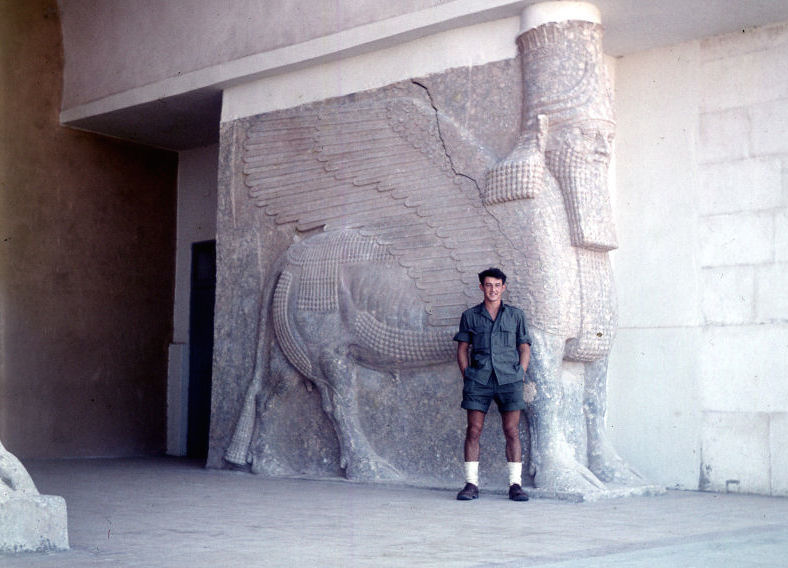 |
||
Your Jersey Geology Trail guide is Dr. Ralph Nichols who graduated in Geology from U.C.W. Aberystwyth in 1958 after reading for the then-called triple crown of Geography, Geology and Economics. My geology lectures and practicals fascinated me and I was exceptionally lucky to be taught and inspired by the best Demonstrators, such as Ron Walters, 'Sarge' Jenkins and Tony Harris (who did 'overtime' and especially helped me with strike-line interpretations), and who later all gained acclaimed doctorates and obtained top professional posts. In the summer of 1957, I was awarded a study tour of the Kirkuk oilfield in Iraq which inspired me to study carbonate rocks. This led in 1961, to being awarded a Ph.D. for an interpretation and micro-fossil correlation of the depositional environments of the isolated outcrops of Carboniferous Limestone along the North Wales coast from SE Anglesey to the Great and Little Orme's Heads and the Llanddulas outcrops. |
||
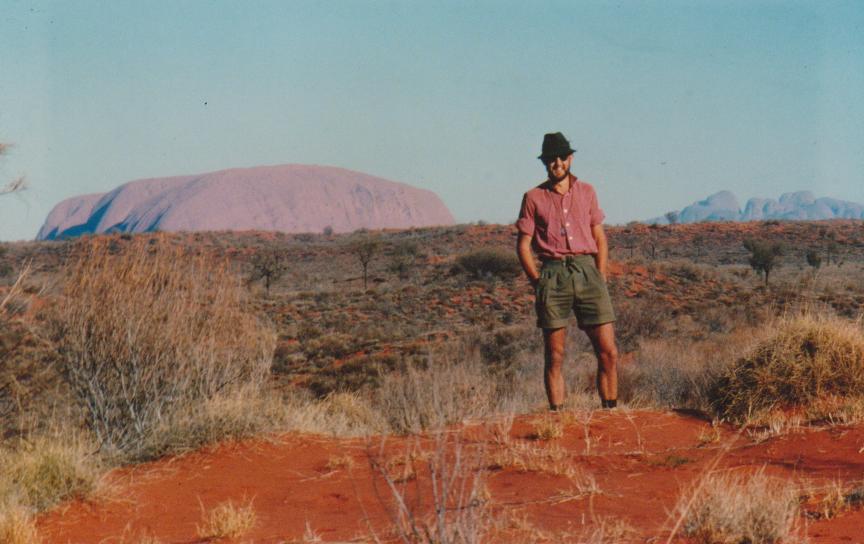 |
||
I then worked for five years as a field and research geologist with the Australian Bureau of Mineral Resources mapping Lower Palaeozoic carbonates and quartz sandstones and searching and drilling for water. This was done by Land Rover (bush-bashing), helicopter survey and stratigraphic drilling on the Barkly Tableland in the Georgina Basin, in the Sandover River area and across the Tanami Desert of the Wiso Basin during winter field seasons. It was during this time that I was again lucky to work alongside fine geologists such as Lee Ranford, Peter Cook, John Veevers, Bert Roberts and many others, the former becoming top geologists and directors/administrators later in their careers. I was also lucky enough to meet and work with Ted Milligan, a fine geologist who became a great friend over the years after we left the Bureau, meeting "along the the track" whenever he was working nearby in places like Nairobi, Madrid or the Morbihan in Brittany! {He has just been elected into the Australian Miners and Prospectors Hall of Fame (Oct.1st '08) for finding many economic coal deposits}. Our field maps and reports, which included detailed rock descriptions, petrology and palaeontology, were written up in the summer and produced officially as unpublished reports as soon as possible after we had driven out of the bush and flown home to Canberra; later, they could be officially published. |
||
Mitchell_(1942).jpg) |
||
In 1966, I moved to Canada to join a small research team with the Saskatchewan Department of Mineral Resources, responsible for part of the search for deep oil in the Devonian carbonates under the Prairies. I also became a Lecturer in Geology (in the 'Extra-Mural' Dept.) at the University of Saskatchewan, delivering a geology course for the Arts Faculty students who needed a science to complete their degree. As I finished my Departmental report, my father died in Jersey and I decided to change my philosophy from living to work to working to live. I returned to Jersey and became a teacher with the States of Jersey Department of Education after obtaining a PGCE at the University of Bath. Again I was lucky, and obtained a post teaching my hobbies - Geography, Geology and Outdoor Activities, and the holiday times gave me chance to visit France, pick up on my French and to continue sailing, skiing and sub-aqua diving, obtaining qualifications to teach all three as Outdoor Activities. Later, I became Head of Humanities, which included Geography, History and Religious Education, but I continued to instruct the Outdoor Activities. I also joined the Geology and Archaeology Sections of La Société Jersiaise and later helped to establish the Jèrriais Section, and also GCSE and A Level Geology and Archaeology courses for night classes at Highlands College of Further Education. This enabled me to learn so much about this incredible island which has a greater variety of things natural and historical than I have ever found in such a small area. Information on all the other walks and trails can be found at the Jersey Tourist Office, St. Helier and on... www.jersey.com. The Société Jersiaise Geology Section programme can be obtained from the office of La Société Jersiaise, 7 Pier Road, St Helier or on... www.societe-jersiaise.org NB. These pages will be edited and amended as more information is obtained, and photographs and pages will be added as further preliminary research is completed. I would be grateful for the identification of any errors.... which are all mine! NB. Please note that when printing some of the pages appear better in landscape. Possible valuable research topics. Recent up-dates to the granites, rhyolites, andesites, shales, silty clays and raised beaches have been made as well as additions to their various structures, textures and mineral associations. As more information is obtained and evaluated, various aspects of the rock units raise further questions. It is hoped that staff and students at university may find the following topics worthy of further study for dissertations and theses, using modern technology. To date these are;
|
||
Stop Press. |
||
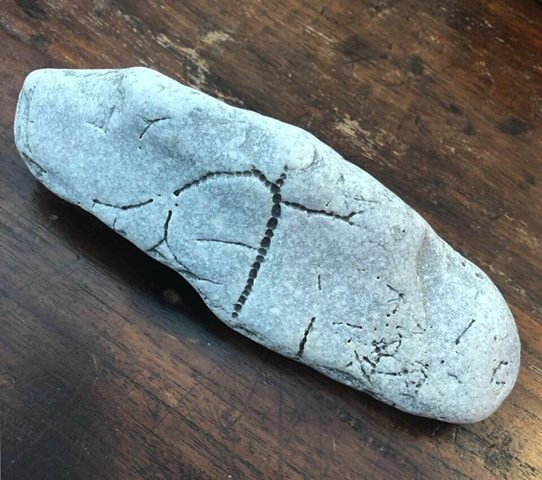 |
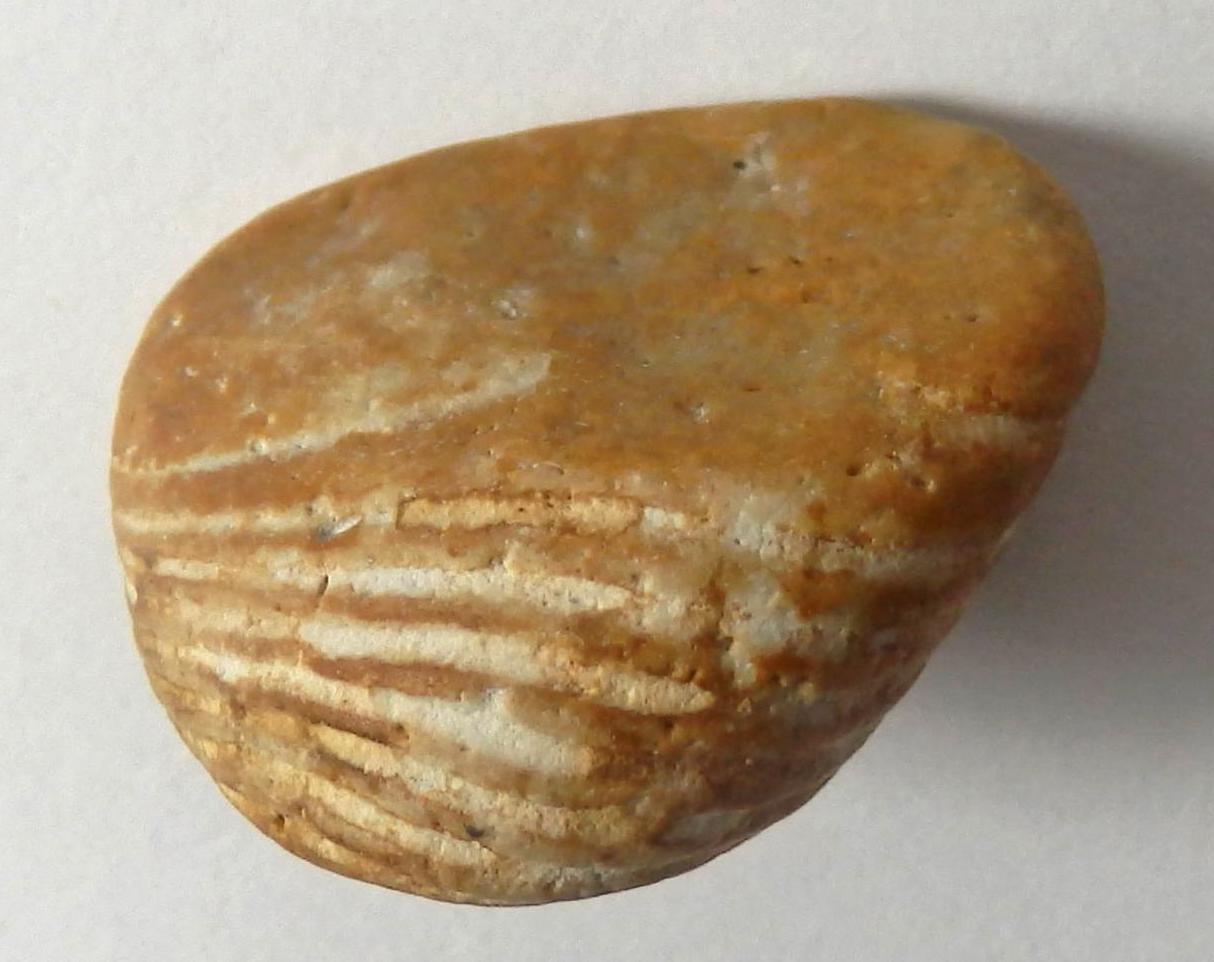 |
|
Fossil trail in limestone. |
La Pulente beach, possible Coral from |
|
The author is extremely grateful to Zach Mahé for the huge task of establishing the website, and to Jeremy Percival for subsequent very detailed editing and observations. |
||